Dimensions:
Height 37 cm, Width 36 cm.
Polychrome earthenware, circa 1930.
Louis-Henri Nicot (1878 - 1944):
Born in 1878, Louis-Henri Nicot studied art at the Beaux Arts in Rennes with Coquelin, Lenoir, Ronsin and then in Paris with Falguière, Mercié, Peter. During these years of very academic teaching, the artist was frequently honored. He completed his studies in 1909. Very quickly, the Breton theme appeared in his work. After the 14-18 war, Nicot became one of the major Breton sculptors. From the outset, he was not among the artists who conveyed the greatest modernism. He created many war memorials in Brittany: Pleurtuit 1920, Guéméné-Penfao 1921, Montfort-sur-Meu 1923. But also outside Brittany, such as the Monument to the Army of Occupation of the Rhine located in Mainz. From 1922, he became a professor at the School of Applied Arts for Industry. His collaboration with the Henriot Manufacture was through Mathurin Méheut, a long-time acquaintance, and began in 1924. He created for them extremely local subjects that played on the permanence of a certain staid image of Brittany, unless it was an ethnographic approach, so evident was the precision of the costumes. Thanks to Nicot, Brittany regained its reassuring and very conservative image that artists, adept at more modernity, tried to make it abandon through the decorative arts. Regular exhibitions, numerous busts, steles, and commemorative works, a continuous presence at the Salon des Artistes Français, recognized by a gold medal in 1933, and the official recognition of the title of Chevalier de la Légion d'honneur the same year, all contributed to making Louis-Henri Nicot an artist who was both recognized and consensual. The artist died in 1944, while preparing the edition of new ceramic works in Quimper.


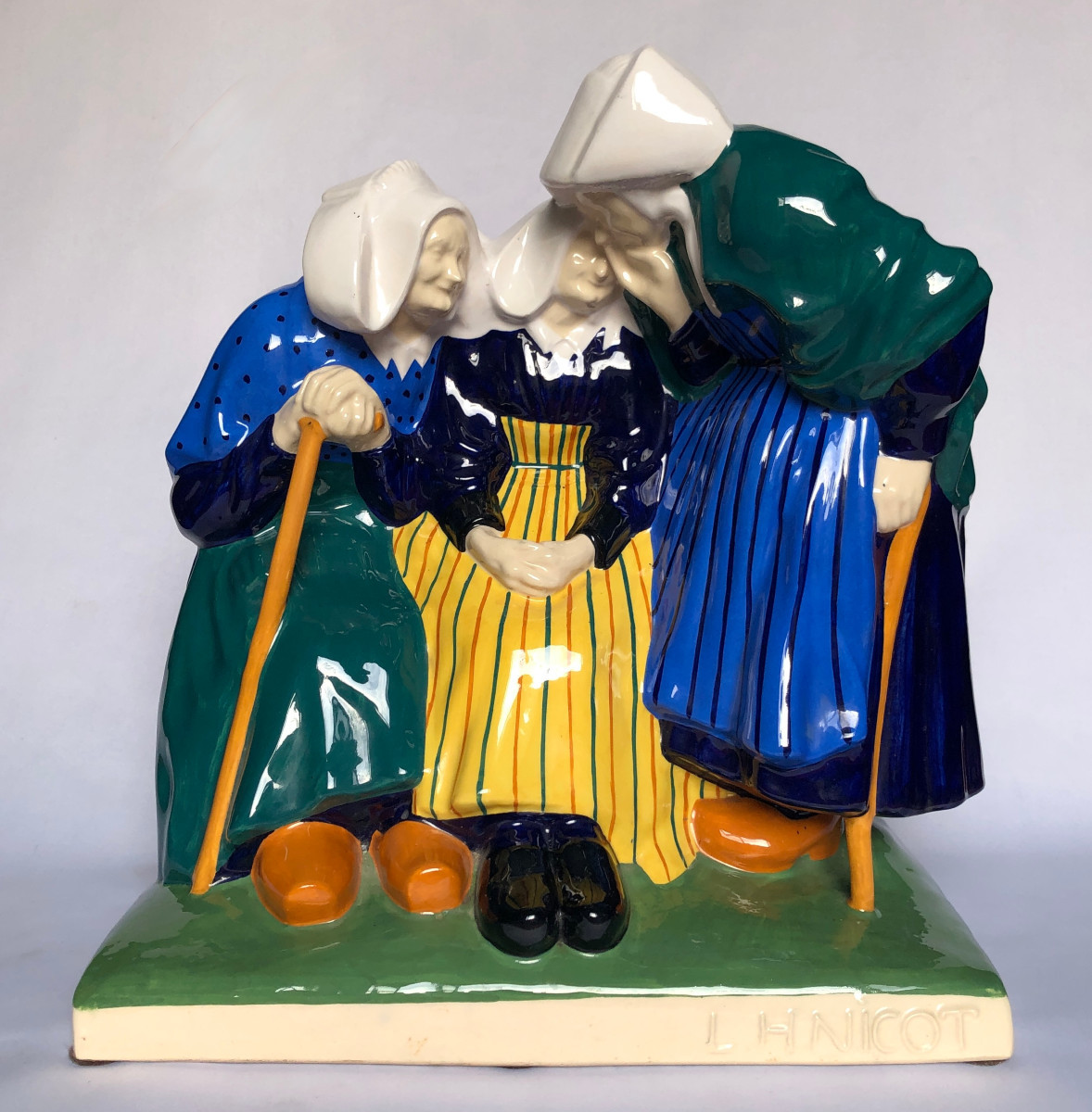

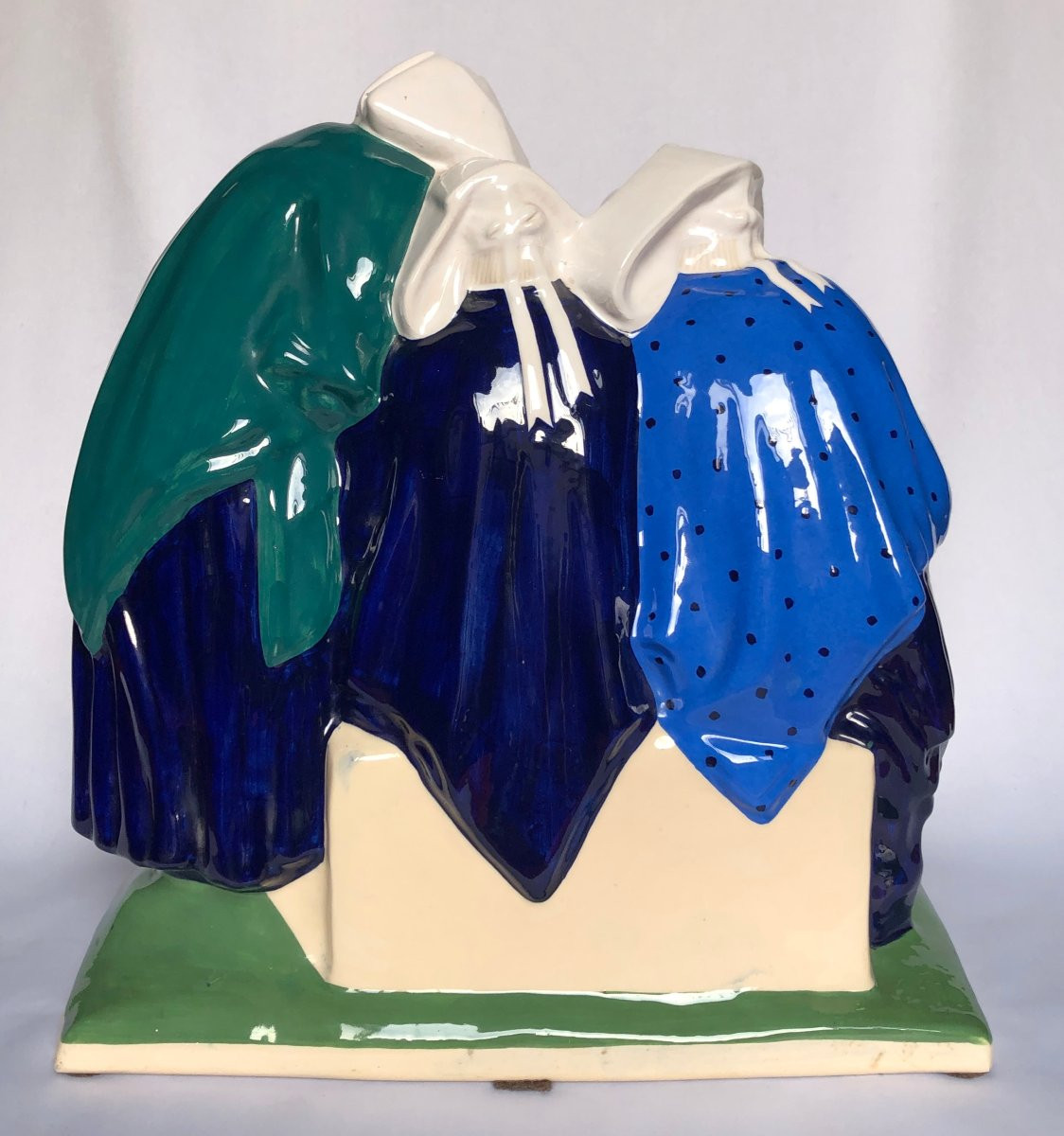







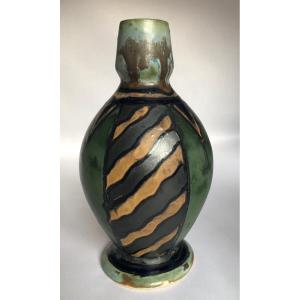




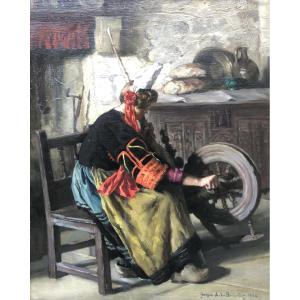


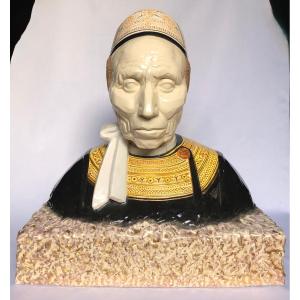







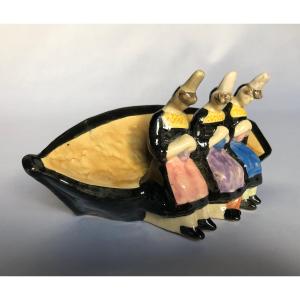



 Le Magazine de PROANTIC
Le Magazine de PROANTIC TRÉSORS Magazine
TRÉSORS Magazine Rivista Artiquariato
Rivista Artiquariato